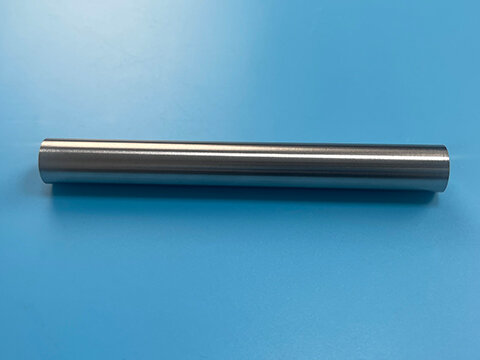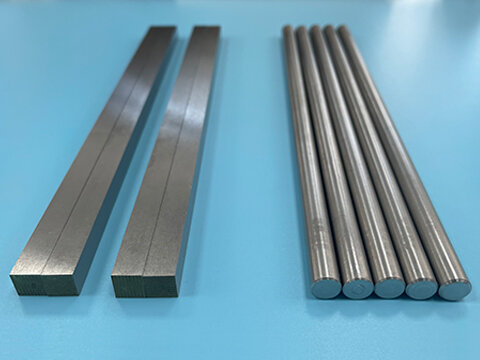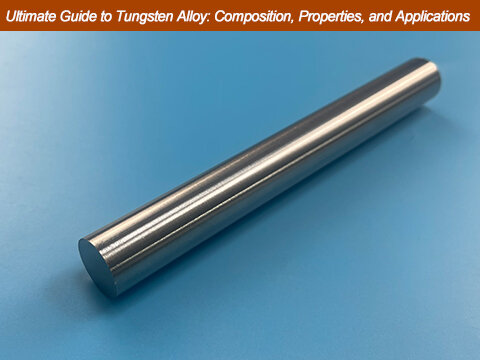Introduction to Tungsten Alloy
Tungsten is an element known for its high melting point, exceptional hardness, and excellent density. Discovered in the late 18th century, it quickly gained attention for its durability and resistance to wear and tear. However, pure tungsten is quite brittle, making it less suitable for many practical uses. To address this issue, scientists developed tungsten alloys by combining tungsten with other metals to enhance its usability.
Tungsten alloy is a blend of tungsten and metals like nickel, iron, or copper. These combinations create materials that keep tungsten's beneficial properties but overcome its brittleness. The resulting alloys are strong, resistant to corrosion, and have superior density, making them invaluable in various high-stress environments.
Composition of Tungsten Alloys
Understanding the Basics
Tungsten alloys are created by combining tungsten with other metals to improve its properties. Pure tungsten is very hard and has a high melting point, but it is also brittle. Alloying tungsten with other metals makes it more useful and versatile.
Common Elements in Tungsten Alloys
Tungsten alloys usually include a large percentage of tungsten along with other metals chosen for their specific benefits. Common elements combined with tungsten include:
-
Nickel (Ni): Adds ductility and corrosion resistance. Tungsten-nickel alloys are dense and used in radiation shielding and military applications.
-
Iron (Fe): Often combined with nickel to make tungsten-nickel-iron alloys, which are strong, ductile, and magnetic. These are used in aerospace and defense.
-
Copper (Cu): Enhances thermal and electrical conductivity. Tungsten-copper alloys are used in electrical contacts and heat sinks.
-
Cobalt (Co): Used in tungsten carbide to make it extremely hard and wear-resistant, ideal for cutting tools and mining equipment.
Exploring the Unique Properties of Tungsten Alloy
Tungsten alloy is a remarkable material used in many industries because of its unique properties.
Strength-to-Weight Ratio
Tungsten alloy is incredibly strong despite its high density. This makes it perfect for applications where weight is a concern, such as in the aerospace and automotive industries, which need materials that are both lightweight and durable.
Chemical Stability and Corrosion Resistance
Tungsten alloy's resistance to corrosion and chemical stability make it ideal for harsh environments, like those in chemical processing and mining.
High Temperature and Pressure Tolerance
Tungsten alloy can handle high temperatures and extreme pressures, making it valuable for specialized equipment and tools.
In summary, tungsten alloy's strength-to-weight ratio, chemical stability, and resistance to extreme conditions make it a versatile and essential material in many industries.
Types of Tungsten Alloys And Its Applications
Tungsten Carbide

Tungsten carbide is made from tungsten and carbon. Known for its extreme hardness and wear resistance, it is often used in cutting tools, abrasives, and applications requiring durability. Tungsten carbide usually contains 70-97% tungsten, with the remainder being carbon and a binder metal like cobalt or nickel. Key properties include:
-
Extreme hardness: Comparable to diamond, ideal for cutting and drilling tools.
-
High wear resistance: Long tool life and reduced maintenance.
-
Good thermal conductivity: Efficient heat dissipation in high-speed cutting applications.
Tungsten-Nickel-Iron (W-Ni-Fe) Alloys

These alloys are known for their balance of density, strength, and ductility. Often called tungsten heavy alloys, they are used in radiation shielding, counterweights, and aerospace components. Typical composition includes 90-97% tungsten, with nickel and iron. Key characteristics are:
-
High density: Provides mass and stability in small volumes.
-
Good machinability: Can be precisely machined despite their hardness.
-
Magnetic properties: Useful for specific electronic and aerospace applications.
Tungsten-Nickel-Copper (W-Ni-Cu) Alloys
These alloys offer high density and strength but are non-magnetic, making them suitable for medical imaging, electrical contacts, and balance weights. They typically consist of 90-95% tungsten, with nickel and copper. Benefits include:
-
Non-magnetic properties: Suitable where magnetism is undesirable.
-
High corrosion resistance: Ideal for harsh environments.
-
Excellent electrical conductivity: Useful in electronic applications.
Tungsten-Rhenium (W-Re) Alloys

Tungsten rhenium alloys combine tungsten with rhenium to improve ductility and high-temperature performance. Used in thermocouples, filaments, and rocket nozzles, typical composition is around 75-97% tungsten, with 3-25% rhenium. Key properties include:
-
Enhanced ductility: Easier to work with than pure tungsten.
-
High-temperature stability: Suitable for extreme heat environments.
-
Good creep resistance: Maintains integrity under prolonged high temperatures.
Tungsten-Silver (W-Ag) Alloys

Tungsten Silver alloys known for their high electrical and thermal conductivity, these alloys are used in electrical contacts and applications needing efficient heat and electrical transfer. Composition usually includes 30-50% tungsten, with the rest being silver. Features include:
-
High conductivity: Both electrical and thermal, ideal for electrical contacts.
-
Good wear resistance: Long-term performance in switching devices.
-
Excellent thermal management: Effective in heat dissipation applications.
Tungsten-Tantalum (W-Ta) Alloys
These alloys combine tungsten with tantalum to enhance corrosion resistance and high-temperature stability. Tungsten tantalum alloy used in chemical processing equipment, aerospace, and defense applications, typical composition includes 70-97% tungsten, with the remainder being tantalum. Benefits include:
-
Superior corrosion resistance: Suitable for chemical and marine environments.
-
High-temperature performance: Retains strength and stability at high temperatures.
-
Good mechanical properties: Durable and reliable in demanding applications.
Tungsten alloys have unique properties that make them essential for various applications. From the extreme hardness of tungsten carbide to the high density of tungsten-nickel-iron alloys, these materials are crucial in aerospace, defense, electronics, and medical fields. Understanding each alloy's composition and characteristics helps in choosing the right one, ensuring optimal performance and durability. With ongoing research, we can expect even better tungsten alloys in the future.
Tungsten Alloy vs. Other Alloys
Comparing tungsten alloys with other alloys helps in understanding their unique advantages and limitations. Here's a concise comparison:
Tungsten Alloy vs. Steel Alloy
-
Tungsten Alloy: Extremely dense and hard, suitable for applications needing significant weight and high wear resistance. High cost and challenging to machine.
-
Steel Alloy: Versatile, less dense, easier to work with, and more cost-effective. Widely used in construction, automotive, and machinery.
Tungsten Alloy vs. Aluminum Alloy
-
Tungsten Alloy: Very dense and hard, ideal for high-stress and high-temperature environments. Expensive and heavy.
-
Aluminum Alloy: Lightweight and corrosion-resistant, perfect for aerospace and automotive industries. Easier and cheaper to work with but not as strong.
Tungsten Alloy vs. Titanium Alloy
-
Tungsten Alloy: High density and melting point, excellent for extreme conditions. Costly and difficult to machine.
-
Titanium Alloy: Strong and lightweight with excellent corrosion resistance, used in aerospace and medical applications. More expensive than steel but less than tungsten.
Tungsten Alloy vs. Nickel Alloy
-
Tungsten Alloy: High density, hardness, and heat resistance. Best for specialized, high-stress applications.
-
Nickel Alloy: Good corrosion and heat resistance, used in harsh environments like chemical plants and gas turbines. More versatile and easier to work with than tungsten alloys.
Tungsten Alloy vs. Copper Alloy
-
Tungsten Alloy: Exceptional hardness and high melting point. Ideal for high-temperature and high-wear applications.
-
Copper Alloy: Excellent electrical and thermal conductivity, used in electrical wiring and heat exchangers. Softer and easier to machine than tungsten alloys.
Tungsten alloys excel in density, hardness, and heat resistance, making them ideal for specific, demanding applications. However, they are often heavier, more expensive, and harder to machine than other alloys like steel, aluminum, titanium, nickel, and copper. Choosing the right alloy depends on balancing these factors according to the needs of the application.
Conclusion
Tungsten alloys are incredibly dense, hard, and heat-resistant, making them perfect for tough applications. While they are heavier and more expensive than other metals like steel, aluminum, titanium, nickel, and copper, their unique properties offer unbeatable performance in challenging environments.
We are a top tungsten metal manufacturer, offering high-quality, customized solutions for aerospace, defense, medical, and industrial uses. Contact us today to find out how our tungsten alloys can meet your needs.















